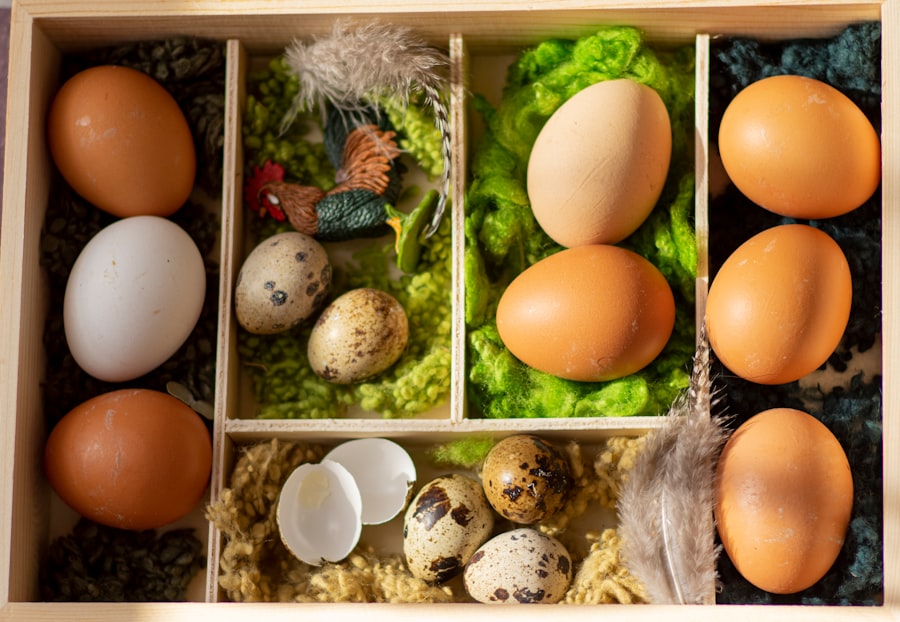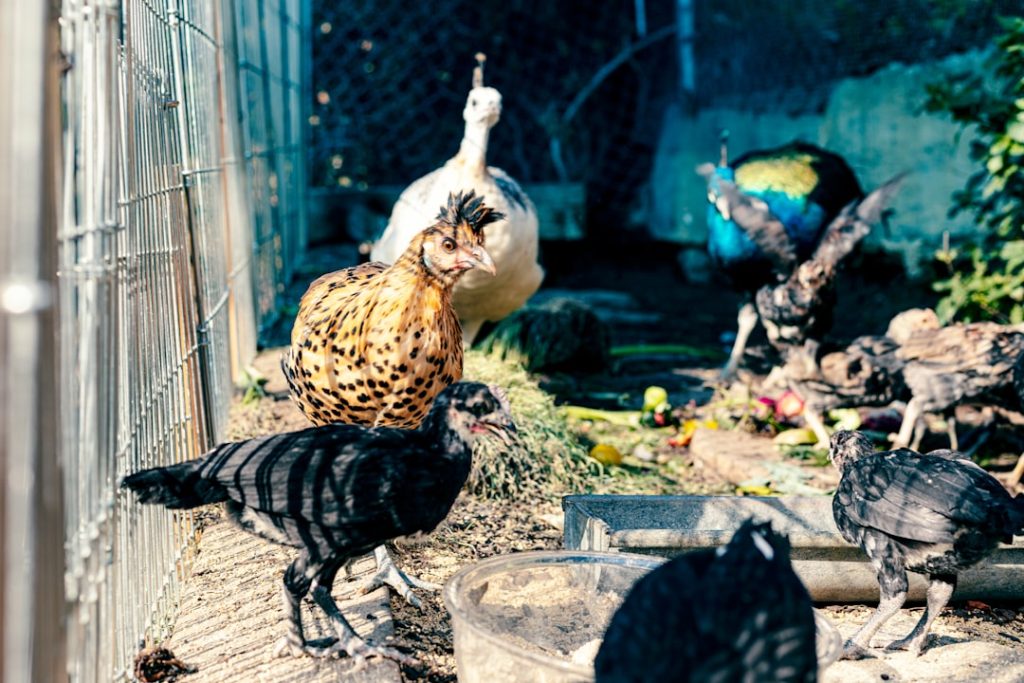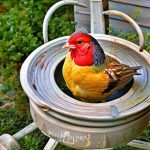Integrating a cat into a chicken coop environment can offer mutual benefits for both species. Cats, being natural predators, can effectively control rodent and pest populations within the coop. Their presence may also provide companionship for chickens, potentially reducing stress levels in the flock.
However, this arrangement requires careful consideration and proper implementation to ensure the safety and well-being of all animals involved. This article examines the advantages of incorporating a cat into a chicken coop setting, methods for training cats to coexist peacefully with chickens, strategies for creating secure spaces for both species, techniques for monitoring feline behavior, potential challenges and their solutions, and practical advice for maintaining a harmonious multi-species environment. By addressing these key aspects, poultry keepers can make informed decisions about whether this unconventional approach is suitable for their specific circumstances and how to implement it effectively if chosen.
Table of Contents
Key Takeaways
- Keeping a cat in with the chickens can provide benefits such as pest control and companionship for the chickens.
- Training a cat to coexist with chickens involves positive reinforcement, supervision, and patience.
- Providing safe spaces for both the cat and chickens, such as separate feeding areas and elevated perches, is essential for their well-being.
- Monitoring the cat’s behavior with the chickens is important to ensure the safety of the birds and the cat’s adjustment to its new environment.
- Potential challenges of keeping a cat in with the chickens include predatory instincts and territorial behavior, but these can be addressed with proper training and supervision.
Benefits of Having a Cat in the Chicken Coop
Effective Pest Control
Cats are natural predators and can help keep the chicken coop free of rodents, such as mice and rats, which can pose a threat to the chickens and their food supply. Additionally, the presence of a cat can help deter other predators, such as snakes and birds of prey, from entering the chicken coop.
Companionship and Stress Relief
Having a cat in the chicken coop can provide companionship for the chickens and help keep them calm and stress-free. Cats are known for their independent nature, but they can also form bonds with other animals, including chickens. The presence of a cat can help create a sense of security for the chickens and provide them with a sense of normalcy in their environment.
A Balanced Ecosystem
Overall, having a cat in the chicken coop can help create a balanced ecosystem and provide mutual benefits for both the cat and the chickens.
Training a Cat to Coexist with Chickens

Training a cat to coexist with chickens requires patience, consistency, and positive reinforcement. It is important to start training the cat at a young age, as this will make it easier for them to adapt to living with chickens. Begin by introducing the cat to the chickens in a controlled environment, such as a separate enclosure within the chicken coop.
Allow the cat to observe the chickens from a distance and gradually increase their exposure to the chickens over time. Use treats and praise to reward the cat for calm and non-aggressive behavior around the chickens. It is important to supervise the interactions between the cat and the chickens closely and intervene if necessary to prevent any potential harm to the chickens.
Additionally, provide the cat with plenty of mental and physical stimulation to prevent boredom and reduce their natural hunting instincts. This can include providing toys, climbing structures, and regular playtime with the cat. With consistent training and positive reinforcement, it is possible for a cat to coexist peacefully with chickens in the same environment.
Providing Safe Spaces for the Cat and Chickens
When keeping a cat in with the chickens, it is important to provide safe spaces for both the cat and the chickens to retreat to when needed. For the cat, this can include providing elevated perches or hiding spots within the chicken coop where they can observe the chickens from a distance. Additionally, consider providing a separate feeding area for the cat to prevent any potential conflicts over food with the chickens.
For the chickens, it is important to provide secure nesting boxes and roosting areas where they can feel safe from any potential threats from the cat. Ensure that these areas are inaccessible to the cat to prevent any potential harm to the chickens. It is also important to provide ample space within the chicken coop to allow both the cat and the chickens to move freely without feeling crowded or stressed.
By providing safe spaces for both the cat and the chickens, you can help ensure that they coexist peacefully within the same environment.
Monitoring the Cat’s Behavior with the Chickens
Monitoring the cat’s behavior with the chickens is essential to ensure their safety and well-being. Keep a close eye on how the cat interacts with the chickens, especially during feeding times and when they are in close proximity to each other. Look for any signs of aggression or predatory behavior from the cat, such as stalking, pouncing, or hissing at the chickens.
If you notice any concerning behavior from the cat, intervene immediately to prevent any potential harm to the chickens. Additionally, observe how the chickens respond to the presence of the cat. Look for any signs of stress or fear in the chickens, such as huddling together or avoiding areas where the cat is present.
If you notice any signs of distress in the chickens, consider adjusting their environment or providing additional safe spaces to help them feel more secure. By monitoring the cat’s behavior with the chickens closely, you can help ensure that they coexist peacefully within the same environment.
Potential Challenges and Solutions

Managing the Cat’s Hunting Instincts
While keeping a cat in with the chickens can have many benefits, there are also potential challenges that may arise. One common challenge is managing the cat’s natural hunting instincts around the chickens. To address this challenge, provide plenty of mental and physical stimulation for the cat to help reduce their hunting instincts.
Ensuring Chicken Safety
Additionally, ensure that the chickens have secure nesting boxes and roosting areas where they can retreat to if they feel threatened by the cat.
Introducing a New Cat to the Flock
Another potential challenge is introducing a new cat to an existing flock of chickens. To address this challenge, introduce the new cat to the chickens gradually and monitor their interactions closely to ensure that they coexist peacefully. Additionally, provide separate feeding areas for the cat and the chickens to prevent any potential conflicts over food.
Coexisting Harmoniously
By being aware of potential challenges and implementing proactive solutions, you can help ensure that both the cat and the chickens coexist harmoniously within the same environment.
Conclusion and Final Tips for Keeping a Cat in with the Chickens
In conclusion, keeping a cat in with the chickens can provide several benefits for both the cat and the chickens. Cats are natural hunters and can help keep the chicken coop free of rodents, while also providing companionship for the chickens. However, it is important to train the cat to coexist peacefully with the chickens, provide safe spaces for both the cat and the chickens, monitor the cat’s behavior closely, and be aware of potential challenges that may arise.
By following these guidelines and being proactive in managing interactions between the cat and the chickens, it is possible for them to coexist harmoniously within the same environment. Final tips for keeping a cat in with the chickens include providing plenty of mental and physical stimulation for the cat to reduce their hunting instincts, introducing new cats to existing flocks gradually, providing separate feeding areas for cats and chickens, and monitoring their interactions closely. Additionally, ensure that both cats and chickens have secure nesting boxes and roosting areas where they can retreat to when needed.
By following these tips and being proactive in managing interactions between cats and chickens, you can create a harmonious environment where both animals can coexist peacefully.
If you’re considering keeping a cat in with your chickens, you may also be interested in learning about how long it takes for chicken eggs to hatch naturally. This article on Poultry Wizard provides valuable information on the incubation period for chicken eggs and the natural hatching process. Understanding this aspect of chicken breeding can help you create a safe and comfortable environment for both your chickens and your cat.
FAQs
What are the benefits of keeping a cat with chickens?
Keeping a cat with chickens can help control rodent populations around the coop, as cats are natural hunters. They can also help deter other predators, such as snakes and birds of prey, from approaching the chickens.
How can I introduce a cat to my chickens?
It’s important to introduce the cat to the chickens slowly and under supervision. Allow the cat to observe the chickens from a distance at first, and gradually bring them closer together over time. Always monitor their interactions to ensure the safety of both the cat and the chickens.
What precautions should I take when keeping a cat with chickens?
It’s important to make sure the cat is well-fed and not hungry when around the chickens, as this can reduce the likelihood of the cat hunting the chickens. Additionally, provide plenty of hiding spots and elevated areas for the chickens to escape to if they feel threatened by the cat.
Are there any risks to keeping a cat with chickens?
While cats can help control rodent populations and deter some predators, there is a risk that the cat may view the chickens as prey. It’s important to monitor the cat’s behavior around the chickens and be prepared to separate them if necessary.
How can I train my cat to coexist with chickens?
Training a cat to coexist with chickens involves positive reinforcement and supervision. Reward the cat for calm and non-aggressive behavior around the chickens, and redirect any hunting instincts towards appropriate toys or activities. Consistent training and supervision are key to successful coexistence.
Meet Walter, the feathered-friend fanatic of Florida! Nestled in the sunshine state, Walter struts through life with his feathered companions, clucking his way to happiness. With a coop that’s fancier than a five-star hotel, he’s the Don Juan of the chicken world. When he’s not teaching his hens to do the cha-cha, you’ll find him in a heated debate with his prized rooster, Sir Clucks-a-Lot. Walter’s poultry passion is no yolk; he’s the sunny-side-up guy you never knew you needed in your flock of friends!







